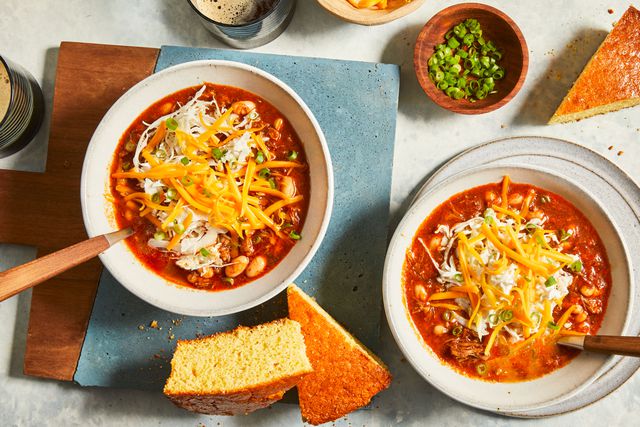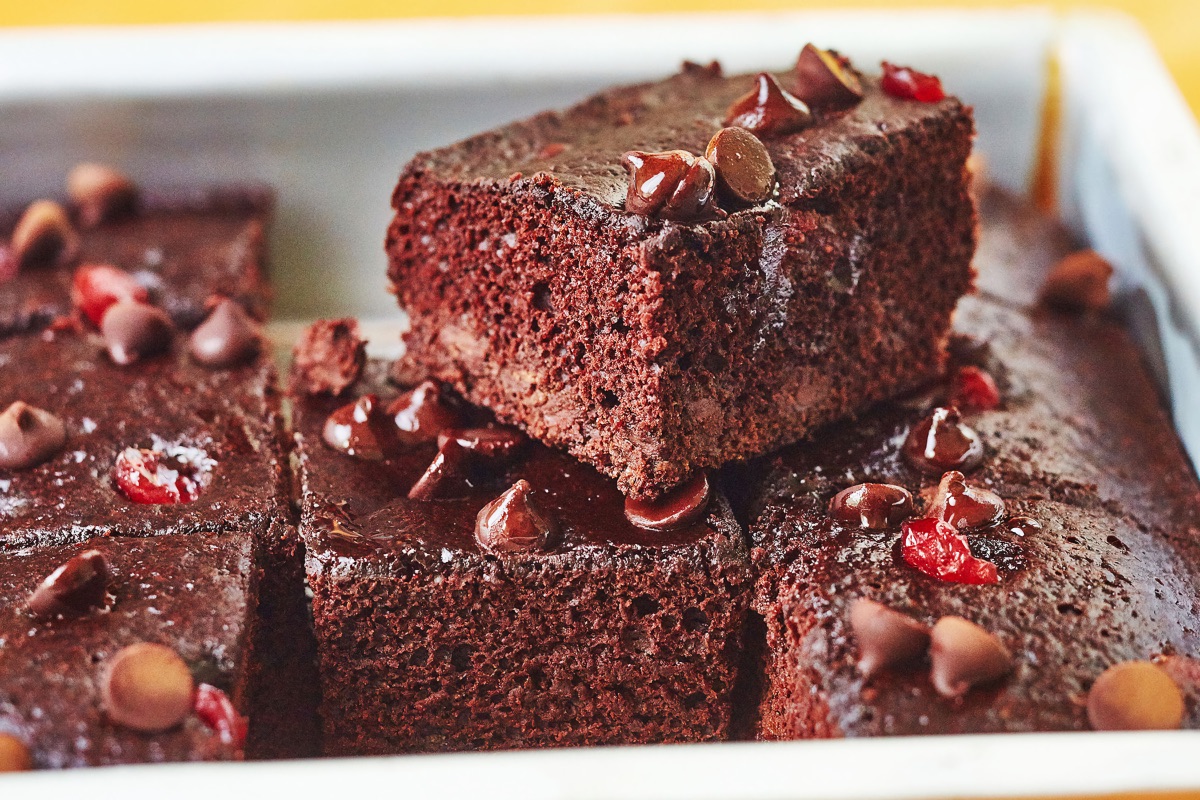Canned beans are a glorious gift for busy home cooks. Whether you reach for a can of black beans, kidney beans, chickpeas, or white beans, the lovely legumes inside are already wonderfully tender, with no pesky soaking required! But before you dump that can into a saucepan, there are a few important things you need to know.
3 Rules For Cooking With Canned Beans
Whether you're cooking black beans, red beans, pinto beans, lima beans, cannellini beans, garbanzo beans, or any other type, we've collected tips and tricks to help you along the way.
1. Always drain and rinse canned beans
No matter what kind of bean you're cooking, you'll want to start by draining and rinsing the beans in a colander or mesh strainer under cold water. Most canned beans are packed in with a thick liquid that's less than appetizing – while this cloudy liquid is harmless (it's really just starch and salt), it's high in sodium and doesn't taste very good. After draining the can, you'll want to thoroughly rinse your beans to wash off the excess liquid. No matter how you're planning you cook canned beans, they should always be drained and rinsed first.
2. Choose a cooking method based on the bean
Depending on the type of bean you're working with, you may want to keep your beans wet or dry for cooking. Certain beans with creamy, starchy interiors call for gentle treatment and an extra boost of hydration.
- Black beans, kidney beans, and cannellini beans will dry out if they're not cooked in enough additional liquid. For these bean varieties, a gentle simmer over medium to medium-low heat on the stovetop with 1/2 cup of water or broth for about 30 minutes will do the trick; this method will help them retain their shape and keep their interiors smooth and creamy. We recommend cooking your beans in chicken stock or broth if you have it for an extra boost of flavor.
- Chickpeas are more solid and can crisp up nicely when roasted in the oven. If you want them extra crispy result, be sure to dry them before tossing them in the oven. For this method, gently roll the chickpeas between paper towels to ensure that they're completely dry before adding oil and seasoning. You can also add chickpeas to soups, stews, or pasta dishes – they're one of the most versatile beans out there.
3. Be sure to add some seasonings
In order to wake up the flavor of canned beans, you'll want to season them with the spices of your choice. Don't fall into the common trap of over-salting your beans – since most beans already contain a good amount of sodium, they actually don't require too much extra salt. Instead, focus on flavor-boosting spices that will complement the beans' flavors.
The spices that you should use vary based on the type of bean you're cooking.
- Black beans, often used in Mexican dishes, pair particularly well with cumin and paprika; we also like to cook our black beans with onion and tomato.
- Similarly, pinto beans play nicely with jalapeño, garlic, oregano, and cumin.
- We love to roast our chickpeas with olive oil, garlic, rosemary, and red pepper flakes.
Beans themselves are relatively neutral in taste, which means they can take on a variety of flavor profiles.
Benefits Of Canned Beans
Although it's hard to beat the flavor and texture of properly cooked dried beans, canned beans are easier to get on the table on any given weeknight.
- Nutritious: Canned beans are a terrific source of fiber, B vitamins, and protein; they pack lots of nutrients into each serving, not to mention that they're inexpensive and last on your shelf for ages.
- Convenient: Rehydrating dried beans may result in a more nuanced, flavorful dish, but canned beans reign supreme in terms of convenience (they're already fully cooked) and can be easily infused with extra flavor. If you find yourself cooking out of the pantry for the next couple of weeks, all those back-shelf cans of beans you bought in case of an emergency may just come in handy. But we'd make the argument that canned beans deserve a spot in your culinary routine year-round.
Jennifer Causey; Food Stylist: Melissa Gray; Prop Stylist: Kay Clarke
Our Favorite Recipes That Use Canned Beans
The above guidelines map out the best way to cook beans as a standalone side dish, but you can also add beans to some of your favorite recipes to bring extra texture and flavor. Most beans make great additions to soups and stews (especially tender great Northern beans or kidney beans), but they can also be used in myriad other ways.
- Instant Pot Pulled Pork Chili
- Slow Cooker Turkey Chili
- Ham-and-Bean Soup
- Black Bean and Corn Salsa
- Mini Black Bean and Cheese Enchiladas
- Sheet Pan Nachos
This article was written by Zoe Denenberg from Southern Living and was legally licensed through the DiveMarketplace by Industry Dive. Please direct all licensing questions to legal@industrydive.com.









